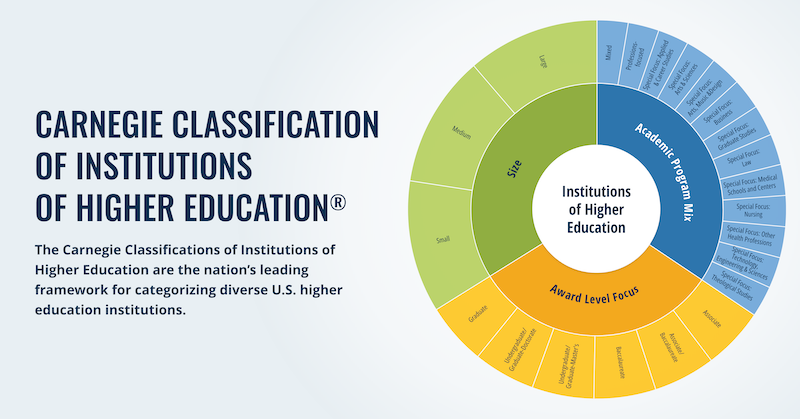Carnegie Program Achieves Dramatic Success for Community College Students in Developmental Mathematics
March 14, 2013
The Carnegie Foundation for the Advancement of Teaching’s newly developed community college mathematics pathway in statistics, Statway™, has achieved dramatic results in the initial implementation, tripling the success rate for developmental mathematics students in half the time.
“These are impressive results from a program in its first year of implementation. We expect to build on this and achieve even higher goals in the years ahead,” Carnegie President Anthony S. Bryk said.
Carnegie formed a network of community colleges, professional associations, and educational researchers to develop and implement the Community College Pathways (CCP) program. The program is organized around two structured pathways, known as Statway™ and Quantway™. Rather than a seeming random walk through a maze of possible course options, students and faculty are now joined in a common, intensive year-long experience toward a shared goal—to achieve college math credit in one year.
The two Pathways are designed to replace a sequence of courses that typically can take as long as two or more years once students are placed into developmental mathematics at entry to a community college. Recent studies report that between 60 and 70 percent of students either do not successfully complete the sequence of required courses or avoid taking math altogether and therefore never graduate.
Colleges first launched the Community College Pathways Program during the 2011-2012 academic year. The first cohort of Statway™ students began in the fall of 2011. This initial cohort of students spanned 19 community colleges and two state universities across five states. In total, there were 50 faculty teaching 55 sections of Statway™ with 1,133 students enrolled.
“These are the students that community colleges especially need to serve well,” Bryk said. “A disproportionate number are minority, from families whose primary language is not English, and typically where neither parent has a post-secondary degree.”
Working with institutional researchers at the network institutions, Carnegie was able to establish baseline data for the percentage of developmental mathematics students that successfully completed a college-level mathematics course. Only 5.9 percent of these developmental mathematics students received credit for college-level mathematics in one year. Only 15.1 percent had achieved this goal after two years, 20.4 percent after three years, and 23.5 percent after four years. After a full year of Statway™, 51 percent of Statway™ students had successfully completed the full Pathway (receiving a grade of C or better in the final term).
There is also data for Quantway™, where the first cohort of students spanned eight community colleges across three states with 23 faculty teaching 24 sections with 418 students enrolled. Since implementation of Quantway™ did not begin until spring 2012, the end of Pathway results are not yet available. However, the data collected so far show that Quantway™ students are on a similar road to success.
The Carnegie Pathways emphasize conceptual understanding and the ability to apply mathematical skills that help students to understand the world around them and that will be useful in a growing number of occupations and professions. Student learning outcomes for both Pathways were established and vetted by a group of national experts and professional societies in the discipline.
What makes Carnegie’s Community College Pathways work different from previous attempts to ameliorate the high failure rates in developmental mathematics goes well beyond a change in course content. Both Pathways have been explicitly designed to capitalize on research-based findings about powerful mathematics instruction. These include an emphasis on:
Productive struggle. It’s not about guessing what the teacher wants to hear or about finding a particular answer. It is about the process of thinking, making sense, and persevering in the face of not knowing exactly how to proceed or whether a particular approach will work.
Explicit connections to concepts. Research suggests making explicit connections among mathematical or statistical facts, ideas, and procedures can improve both conceptual and procedural understanding.
Deliberate practice. Deliberate practice avoids rote repetition for carefully sequenced problems developed to guide students to a deeper understanding of core concepts.
These three learning opportunities are embedded in the specific lessons, assessments, and out-of-class resources that form the curriculum for each Pathway. Both of the Pathways use face-to-face and online learning.
The Pathways integrate:
- Ambitious learning goals leading to deep and long lasting understanding;
- Lessons and out-of-class materials to advance these goals;
- Formative and summative assessments, including end-of-module and common end-of-course assessments;
- Productive persistence — an evidence-based package of practical student activities and faculty actions integrated throughout the instructional system to increase student motivation, tenacity, and skills for success;
- A language and literacy component which interweaves necessary supports in instructional materials and classroom activities so that learning is accessible to all;
- An advancing quality teaching component to provide instructors with the knowledge, skills, and habits necessary to experience efficacy in initial use and develop increasing expertise over time; and
- Analytics to support the continuous improvement of Pathways instruction.
To promote consistently high performance and continuous improvement as the project scales, Carnegie has organized its collaborators and cooperative members into Networked Improvement Communities (NICs). The goal of this networked community is to promote continuous improvement strategies throughout the member institutions. This approach also offers faculty members a new role as research partners and co-developers of the materials as well as advocates for continuous improvement in their own teaching and student learning.
“We know that as this initiative scales, the challenge ahead is to focus on the variation in performance that may emerge across the classrooms in our network,” Bryk said. “We have to ask ourselves not just ‘what works on average’ but rather ‘what works for whom under what set of conditions” so that we can achieve efficacy in every college, classroom, and for the diverse types of students who enroll.”
To contact a member of the Carnegie team, email us at pathways@carnegiefoundation.org.
###
This program of work is supported by Carnegie Corporation of New York, The Bill & Melinda Gates Foundation, The William and Flora Hewlett Foundation, The Kresge Foundation, and Lumina Foundation in cooperation with the Carnegie Foundation for the Advancement of Teaching.
The Carnegie Foundation is committed to developing networks of ideas, individuals, and institutions to advance teaching and learning. We join together scholars, practitioners, and designers in new ways to solve problems of educational practice. Toward this end, we work to integrate the discipline of improvement science into education with the goal of accelerating the field’s capacity to learn to improve.





